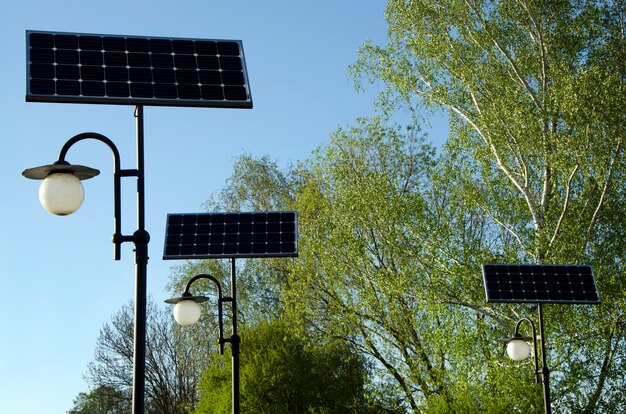Solar Street Light

Solar street lights offer an innovative and sustainable solution, demanding minimal maintenance compared to traditional counterparts. Eliminating external wires reduces the risk of accidents, fostering safer urban environments. Additionally, the electricity generated from solar panels is non-pollutive, aligning with eco-friendly practices. The modularity of solar panel systems allows easy transportation of individual components, enhancing flexibility in deployment.
Operating as elevated light sources, solar street lights are powered by solar panels, either mounted on the lighting structure or integrated into the pole itself. During the day, these panels charge a rechargeable battery, which, in turn, powers a fluorescent or LED lamp during the night. This self-sufficient mechanism ensures continuous and reliable illumination without dependence on external power sources.
The majority of solar lights feature automatic on/off functionality, triggered by sensing outdoor light through solar panel voltage. Specifically designed for continuous night operation, solar streetlights can remain illuminated for multiple nights, even during extended periods without sunlight. Unlike contemporary models, older versions often included lamps that were not fluorescent or LED. In areas prone to strong winds, solar lights are typically equipped with flat panels to enhance wind resistance.
Modern solar street light designs leverage wireless technology and fuzzy control theory for efficient battery management. These technological advancements enable these lights to function as a network, with each light possessing the capability to autonomously control the turning on and off of the entire network. This innovative approach enhances overall system efficiency and adaptability, especially in urban environments.
Solar street lights consist of four main parts:
The solar panel is crucial for a solar street light, converting solar energy into electricity. Two common types are monocrystalline and polycrystalline, with monocrystalline panels having a much higher conversion rate. Solar panels also vary in wattage.
Modern solar street lights primarily use LEDs, providing higher luminosity with lower energy consumption than traditional HPS fixtures. LEDs allow for at least 50% lower energy consumption and the absence of warm-up time enables the use of motion detectors for added efficiency.
Batteries store solar-generated electricity during the day, powering the fixture at night. The battery's life cycle significantly impacts the light's lifetime, and battery capacity affects backup days. Commonly used battery types include gel cell deep cycle, lead-acid, and compact lithium-ion batteries.
Sturdy poles are essential for all street lights, especially solar street lights with components mounted on top: fixtures, panels, and sometimes batteries. Some newer designs integrate PV panels and electronics within the pole itself. Wind resistance is crucial, and accessories like a foundation cage and battery box exist for these poles.
Solar street lights represent a significant stride in efficiency and sustainability. Their automatic features, energy-efficient lighting sources, and versatile components make them an ideal choice for various urban and remote lighting applications. Embracing these advancements contributes to building environmentally conscious and resilient urban infrastructure.
WhatsApp us